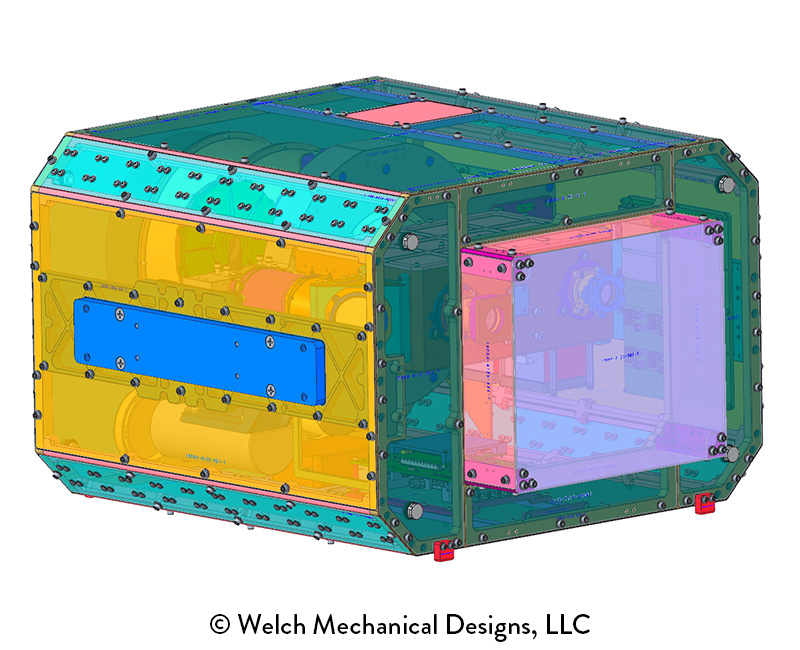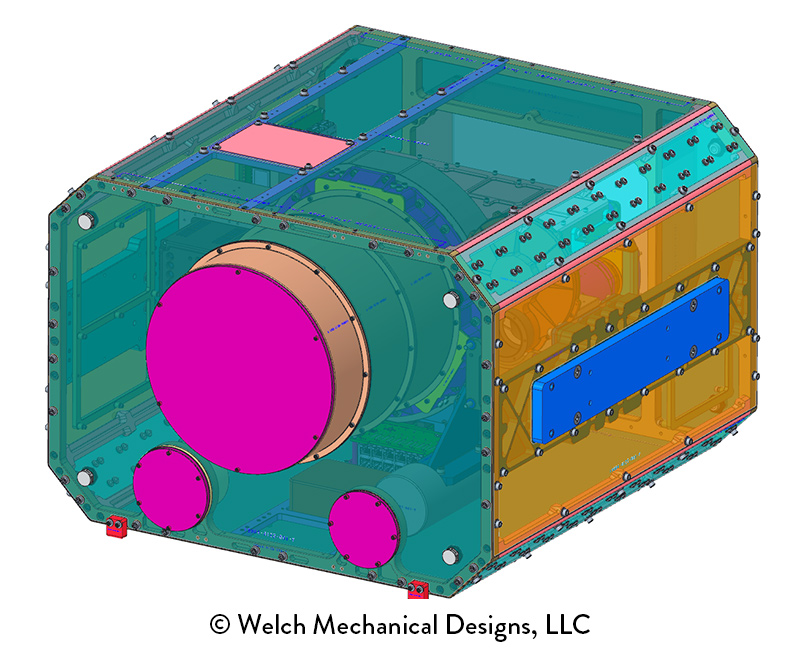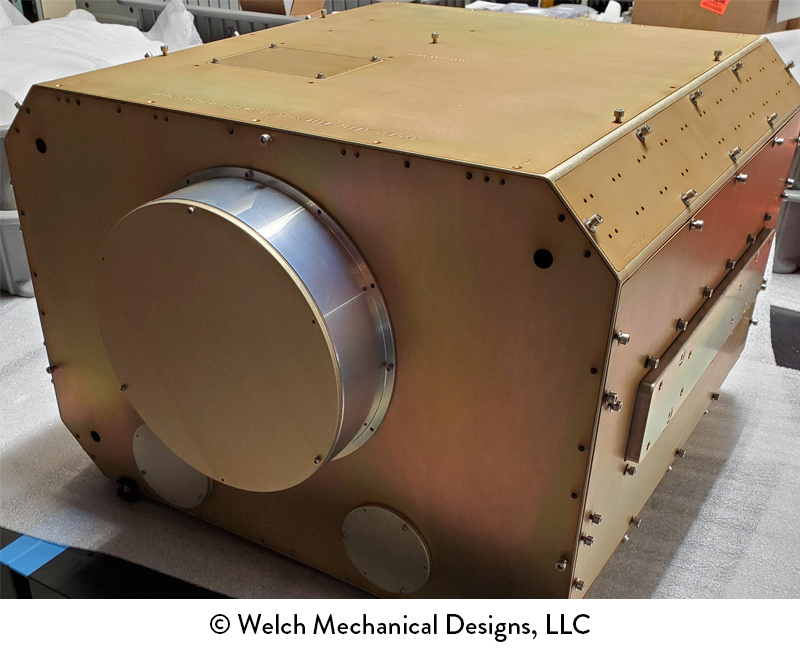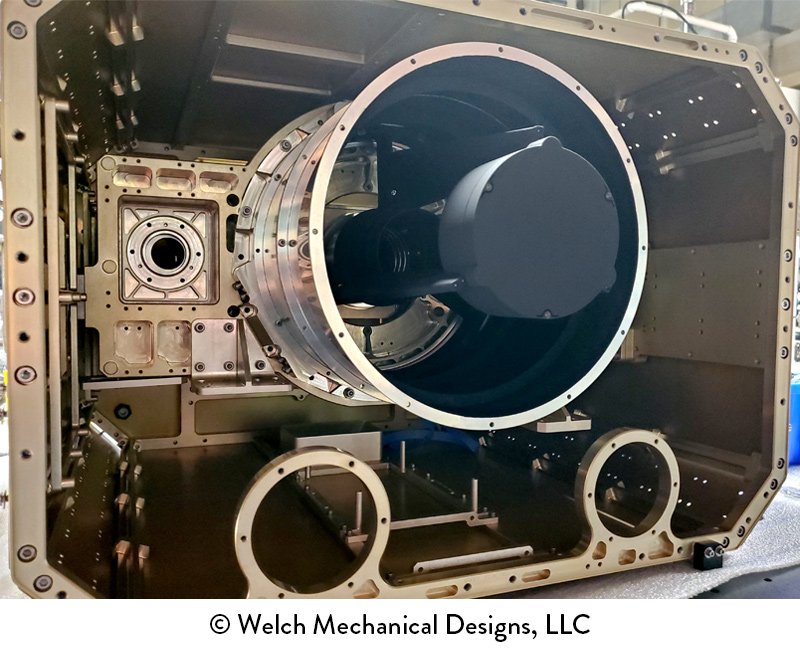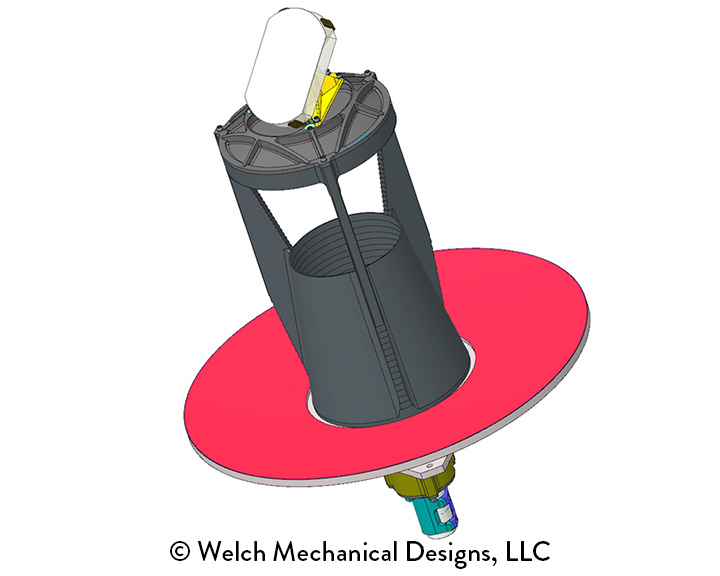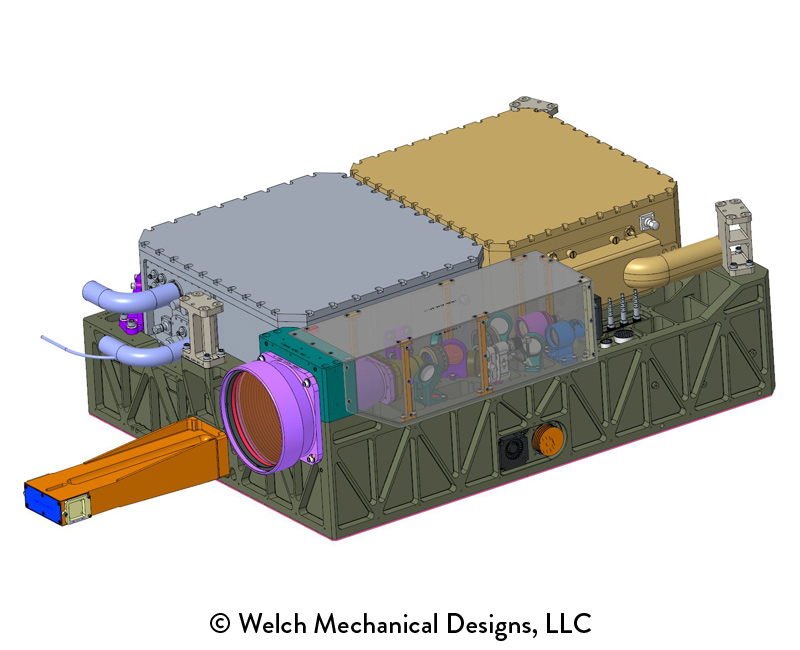SCIFLI Airborne Multispectral Imager (SAMI)
SCIFLI Airborne Multispectral Imager (SAMI)
The SCIFLI Airborne Multispectral Imager resides in a nose-mounted stabilized gimbal in one of NASA's WB-57 aircraft. SAMI is designed to observe the Artemis 1 Moon Mission Launch and other rocket launch and reentry events. SAMI's optical system had a 200 mm entrance aperture with a 1600 mm focal length. The telescope primary and secondary mirrors were manufactured from Zerodur and the metering structure from Invar for thermal stability.
SAMI is capable of simultaneously imaging targets over four distinct spectral bands, spanning the spectrum from the ultraviolet to mid-wave infrared. High-resolution temperature data is collected through thermal imaging using the MWIR, SWIR, and NIR channels. An additional wide-field-of-view (WFOV) channel was used for target acquisition and tracking.
To learn more about NASA's SAMI project, click here.
Challenges:
An unanticipated ghost image of system entrance pupil at UV-VIS image plane required redesign of UV-VIS channel corrector optics. Our optical know how and experience helped to quickly work with the optical engineer to identify the problem and come up with a drop in solution.
The system is expected to operate at cold temperatures, requiring us to perform environmental testing to ensure our actuating components will perform appropriately. Selecting and qualifying COTS linear actuators for operation in the WB-57 used one of our thermal chambers held at -50°C.

